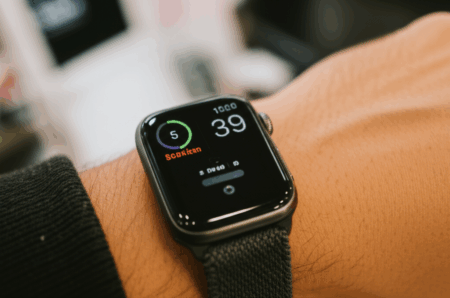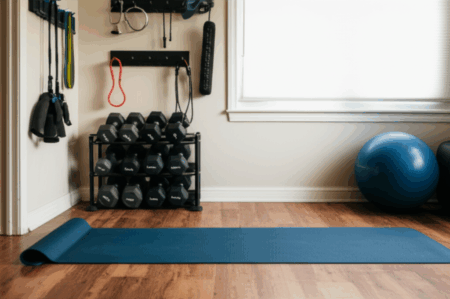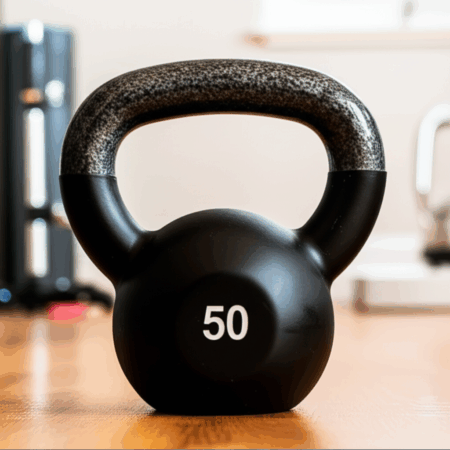The way we engage with sports and fitness at home has undergone a dramatic transformation. What once involved a solitary workout or basic equipment, now blends cutting-edge technology, immersive experiences, and personalized coaching into a comprehensive, convenient, and often social, home-based athletic ecosystem. This shift, significantly accelerated by recent global events, has reinvented home recreation, making it personal, data-driven, and surprisingly interactive.

The Digital Fitness Revolution: A Growing Market
The demand for at-home fitness solutions was already on an upward trajectory before 2020, with consumers increasingly mindful of their health and seeking convenient options. The subsequent lockdowns propelled this trend into an “inferno of demand,” leading to a cultural shift towards home-based workouts that continues to gain momentum.
The smart fitness market is experiencing robust growth, with projections indicating a rise from USD 18.6 billion in 2025 to USD 59.8 billion by 2035, at a compound annual growth rate (CAGR) of 12.3%. Similarly, the global at-home fitness equipment market is anticipated to reach around USD 20.56 billion by 2034, expanding at an 8.21% CAGR from 2025 to 2034. This growth is fueled by a combination of technological advancements, rising health awareness, and the desire for accessible fitness options.
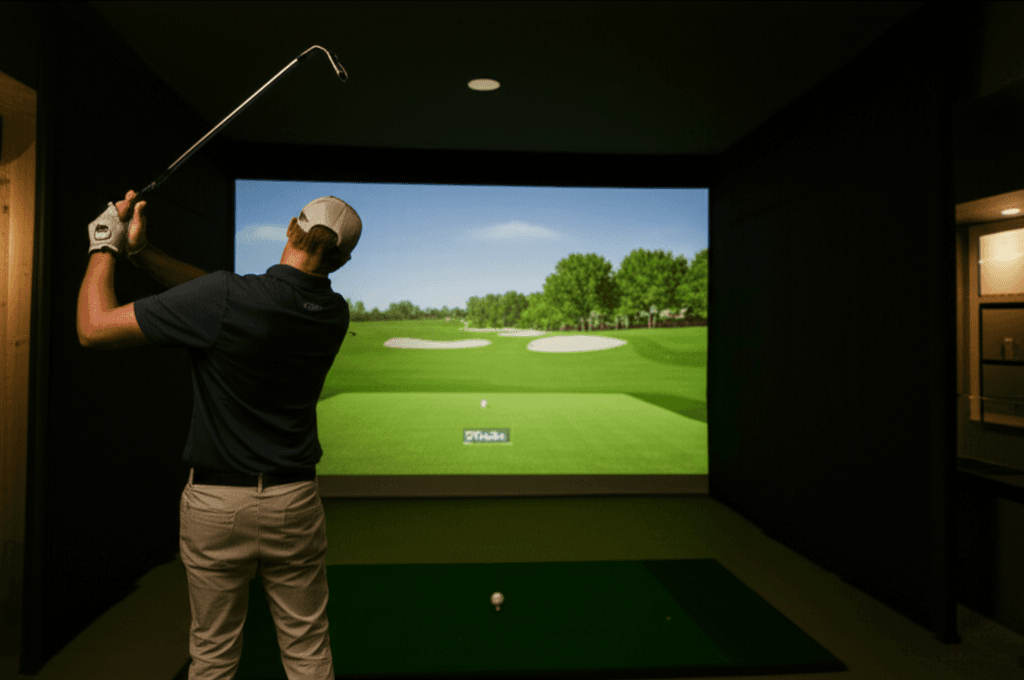
Mastering the Greens Indoors: Advancements in Golf Simulators
For golf enthusiasts, the dream of playing a round on a world-class course without leaving home is now a vivid reality, thanks to sophisticated golf simulators. These systems have evolved far beyond simple hitting nets.
Hyper-Realistic Graphics and Environments
Modern golf simulators boast hyper-realistic graphics and environments, blurring the lines between virtual and reality. Advanced graphics rendering, lighting effects, and texture mapping faithfully replicate the look, feel, and atmosphere of premier golf courses worldwide. High-resolution 4K and laser projectors enhance this immersive visual experience.
Enhanced Sensor Technology and AI Coaching
At the heart of these simulators is advanced sensor technology, including high-speed cameras and radar sensors, which capture detailed information about a golfer’s swing and ball flight. These systems track over 50 data points, such as ball speed, spin, launch angle, and club path, providing unparalleled accuracy and precision. Artificial intelligence (AI) and machine learning algorithms analyze this data to provide personalized coaching and adaptive challenges, helping players fine-tune their swing mechanics with specific, accurate feedback.
Year-Round Play and Community
Home golf simulators offer year-round accessibility, allowing players to practice regardless of weather conditions. They also provide access to virtual replicas of famous courses worldwide, from Pebble Beach to St. Andrews. Many simulators can connect to the internet, enabling golfers to play against others globally, join online tournaments, and even compete for prizes, adding a social and competitive dimension to at-home practice. Notable examples of top home golf simulators include the SkyTrak+ SIG10, Trackman iO SIG10, and more portable options like the Garmin R10 Practice Bundle.
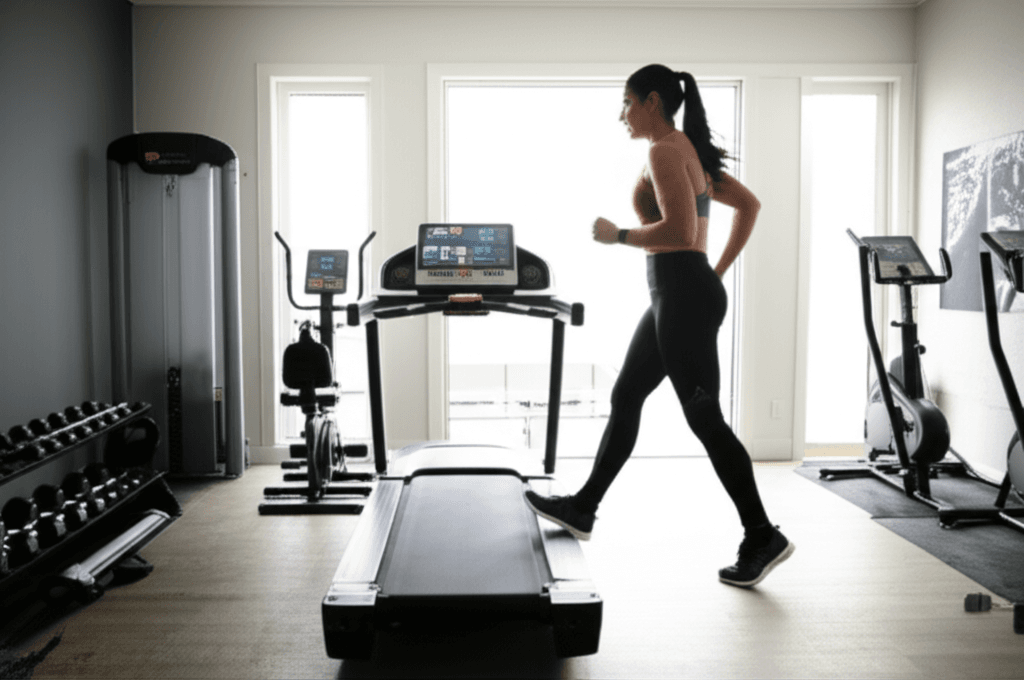
The Rise of Smart Fitness Equipment: Your Personalized Home Gym
The concept of a home gym has been revolutionized by smart fitness equipment, moving beyond basic treadmills and ellipticals to connected, intelligent systems. Companies like Peloton, Tonal, and Mirror have led the charge in this space, offering all-in-one solutions that provide a wide variety of workouts in a compact design.
Real-Time Feedback and Personalized Workouts
Smart fitness machines offer real-time feedback, track progress, and adjust workouts based on individual goals and performance. Smart treadmills, stationary bikes, and rowing machines sync with apps to provide personalized workout plans, track heart rate, calories burned, and even simulate real-world environments. Some devices can automatically adjust resistance and speed, creating an experience akin to having a personal trainer in your living room.
Virtual Coaching and Community
Connected home gyms offer access to virtual training sessions, including live-streamed group classes or on-demand workouts guided by personal trainers. These platforms track performance, deliver coaching, and foster community, transforming solitary routines into shared, interactive sessions. AI-powered features are also emerging, offering real-time form correction, adaptive weight adjustments, and guided workout recommendations.
Data-Driven Insights for Optimal Health
Beyond basic metrics, smart equipment tracks a plethora of data, including heart rate, calories burned, and performance analytics. This data is used to set and achieve personalized fitness goals, with some machines even adapting workouts based on the user’s performance. This data-driven approach enhances motivation and helps users stay on track. The integration of AI also allows for predictive analytics to track user and equipment performance, ultimately enhancing user satisfaction.
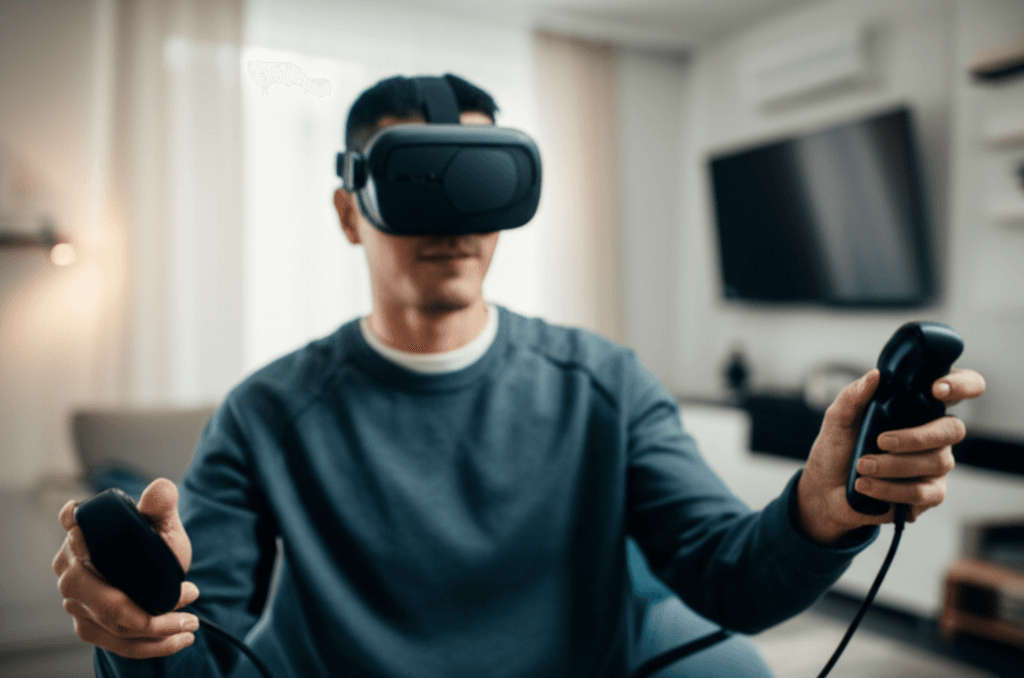
Immersive Experiences: VR, AR, and Mixed Reality in Sports
Beyond traditional equipment, virtual reality (VR), augmented reality (AR), and mixed reality (MR) are creating entirely new categories of at-home sports experiences, blending entertainment with physical activity.
Virtual Reality (VR) for Full Immersion
VR technology fully immerses users in virtual environments, allowing them to participate in activities like boxing, dancing, or even sword fighting in digital worlds. Platforms such as Supernatural VR Fitness offer intense workouts in captivating virtual landscapes, making exercise more engaging and fun. VR sports simulations also allow athletes to practice specific skills and techniques in controlled environments, helping basketball players improve shooting accuracy or golfers refine their swings.
Augmented Reality (AR) for Enhanced Realism
Augmented reality overlays digital elements onto the real world, providing real-time feedback and interactive experiences. AR apps can superimpose virtual trainers in a user’s real environment, demonstrating proper form, offering real-time feedback, and adjusting workouts. Gamified AR experiences like “Zombies, Run!” turn a simple jog into an escape from a zombie apocalypse, while apps like Gymnotize use AR to show users how to correctly lift weights, highlighting incorrect postures. AR also helps in injury prevention by identifying potential risks and adjusting technique.
Mixed Reality (MR) for Blended Play
Mixed reality (MR) takes this a step further by blending the digital and physical worlds together, allowing virtual objects to interact with real environments. Games like “Home Sports” from Resolution Games offer mixed reality versions of pickleball, hockey, bowling, mini golf, and badminton that adapt to the user’s room size. These titles support local and online multiplayer, transforming living rooms into dynamic playgrounds and fostering social fun.
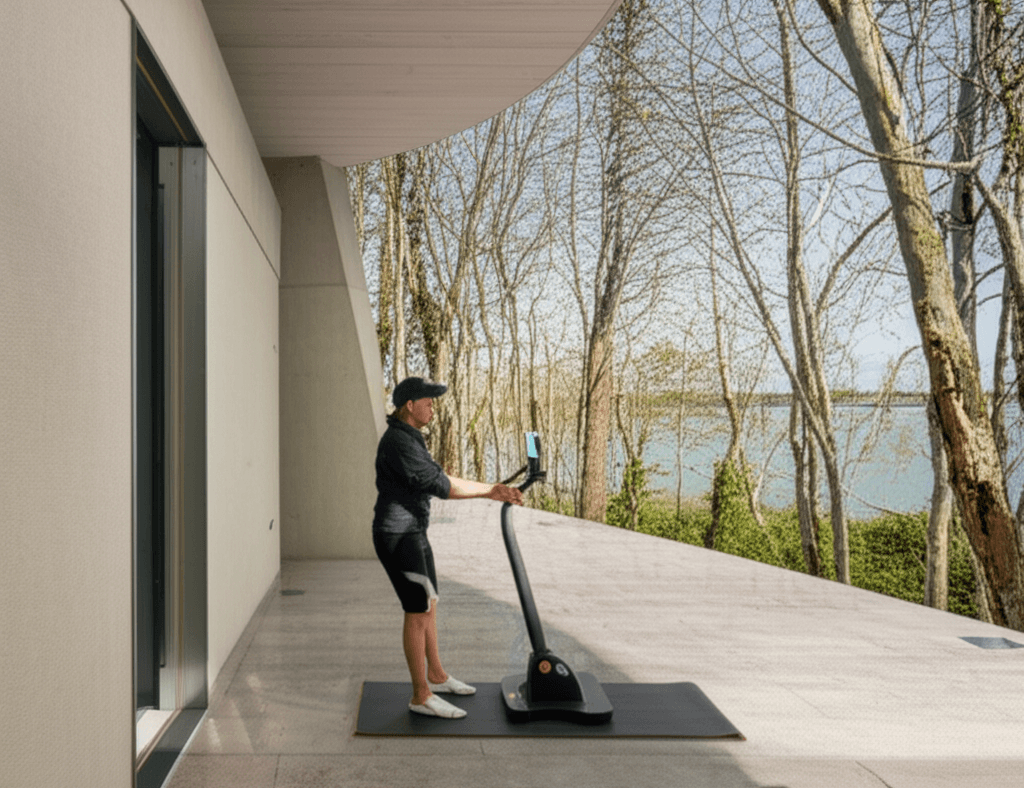
Key Benefits of Reinvented At-Home Sports
The integration of technology into at-home sports offers a multitude of advantages:
- Convenience and Accessibility: Sports and workouts can be done anytime, anywhere, fitting seamlessly into busy schedules and overcoming geographical barriers.
- Personalization and Data-Driven Improvement: AI and advanced sensors provide tailored coaching, adaptive challenges, and detailed performance metrics, optimizing training for individual needs and goals.
- Enhanced Engagement and Motivation: Gamification, immersive environments, and social features make exercise more enjoyable and keep users motivated.
- Skill Development and Injury Prevention: VR/AR simulations allow for safe, repetitive practice, while AI and AR can provide form correction, reducing injury risk and improving technique.
- Cost-Effectiveness (Long-Term): While initial investment can be significant, the long-term cost of at-home solutions can be comparable to or less than gym memberships and professional coaching.
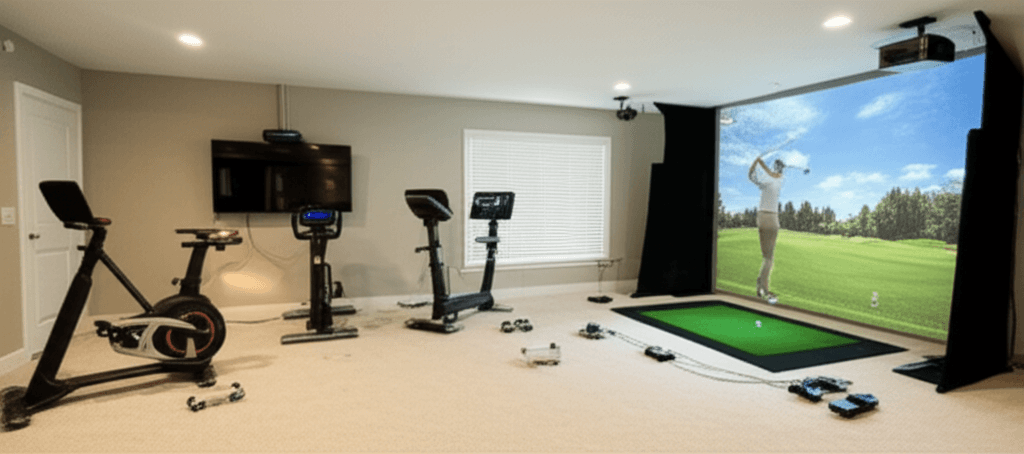
The Future Landscape of At-Home Sports
While challenges such as the initial high cost of advanced equipment and space requirements exist, the future of at-home sports and fitness is poised for even greater innovation. We can expect deeper AI integration, with AI-driven virtual coaches offering precise feedback on biomechanics and mental resilience. Next-generation wearables will likely focus on advanced biometric tracking, including metabolic analysis, real-time glucose monitoring, and neurofeedback for mental performance optimization.
The industry is moving towards fully integrated smart fitness environments that combine VR/AR workouts with AI-powered nutrition guidance and biometric monitoring. Remote team training via VR, enhanced AI coaching, and even more accessible entry-level products are anticipated, further democratizing sports and fitness. As technology continues to evolve, the home is becoming not just a place of rest, but a dynamic arena for athletic pursuit and personal bests.





